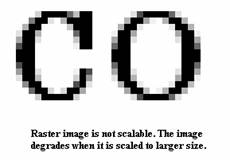

The underlying images in Band Sequential Encoding can be rendered by other tools. This format ranks highly for transparency. They describe how, of the 10,750 ADRG products currently available, 5,052 of them have been issued since the notice of inactivation. However, in their 2004 paper, Managing Large Collections of NGA Raster Data, Traphan & Bauch argue that CADRG turns out to be a poor substitute for ADRG for many purposes. MIL-PRF-89038, Compressed Arc Digitized Raster Graphics (CADRG),ĭated 6 October 1994. Performance specification to be used in new system design is MIL-A-89007 states ADRG is inactive for new design, and is no longer used, except to support existing systems. Topographic Line Maps (TLMs) at 1:50,000.Joint Operations Graphics (JOGs) at 1:250,000.Operational Navigation Charts (ONCs) at 1:1,000,000.Department of Defense, ADRG supported the Navy's AV8B program and the Army's Maneuver Control System. Document available through Internet Archive. Military Specification: Arc Digitized Raster Graphics (ADRG), MIL-A-89007 22 Feb, 1990. Document available through Internet Archive.Ĭompressed ARC Digitized Raster Graphics (CADRG), a format intended as a successor, not described separately at this site. Each source graphic subdirectory contains a source graphic information file (*.SOU) and zero or more legend image files (*.LGG).ĪDRG is a middle-state or final-state format, a general-purpose raster dataset for map displays on mission planning systems, Command and Control systems, and aircraft cockpits.īand Sequential (BSQ) Image Encoding. Each subdirectory contains a general information file, (*.GEN), a quality file (*.QAL), and a reduced resolution overview image file (*.OVR), There will be one or more ADRG image files (*.IMG) and one or more source graphic subdirectories. There will also be one or more DR subdirectories.
RASTER GRAPHICS PATCH
Each ADRG volume contains a header file, TRANSH01.THF, and a color test patch image file, TESTPA01.CPH. The top level contains information relevant to the entire CD-ROM volume, the second level contains DR related files, and the bottom level contains source graphic related files. One or more source graphics are placed into each DR.ĪDRG data files are arranged hierarchically. One or more DRs fit onto a single CD-ROM. For distribution, ADRG data is divided into geographic data sets referred to as Distribution Rectangles (DRs). The intended exchange medium for ADRG is a compact disk (CD-ROM).
RASTER GRAPHICS ISO
Data collected from a single chart/map series and scale can be maintained as a worldwide seamless data base of raster graphic data with each pixel having a distinct geographic location.ĪDRG is a military format that conforms to the ISO 8211 standard for an ASCII data description followed by binary image data.


The source graphic is normally a map sheet. Maps/charts are converted into digital data by raster scanning and transforming and georeferencing the map image using the equal arc-second raster chart/map (ARC) system in which the globe is divided into 18 latitudinal bands or zones. ARC Digitized Raster Graphics (ADRG) are digitized maps and charts transformed into a specific georegistration framework and accompanied by ASCII encoded support files. In 1989-90 to support applications that require a raster map background display. ADRG is a standard National Imagery and Mapping Agency (NIMA) digital product designed


 0 kommentar(er)
0 kommentar(er)
